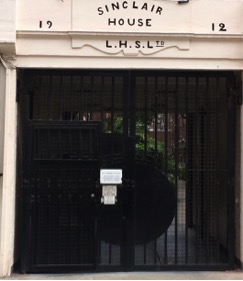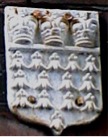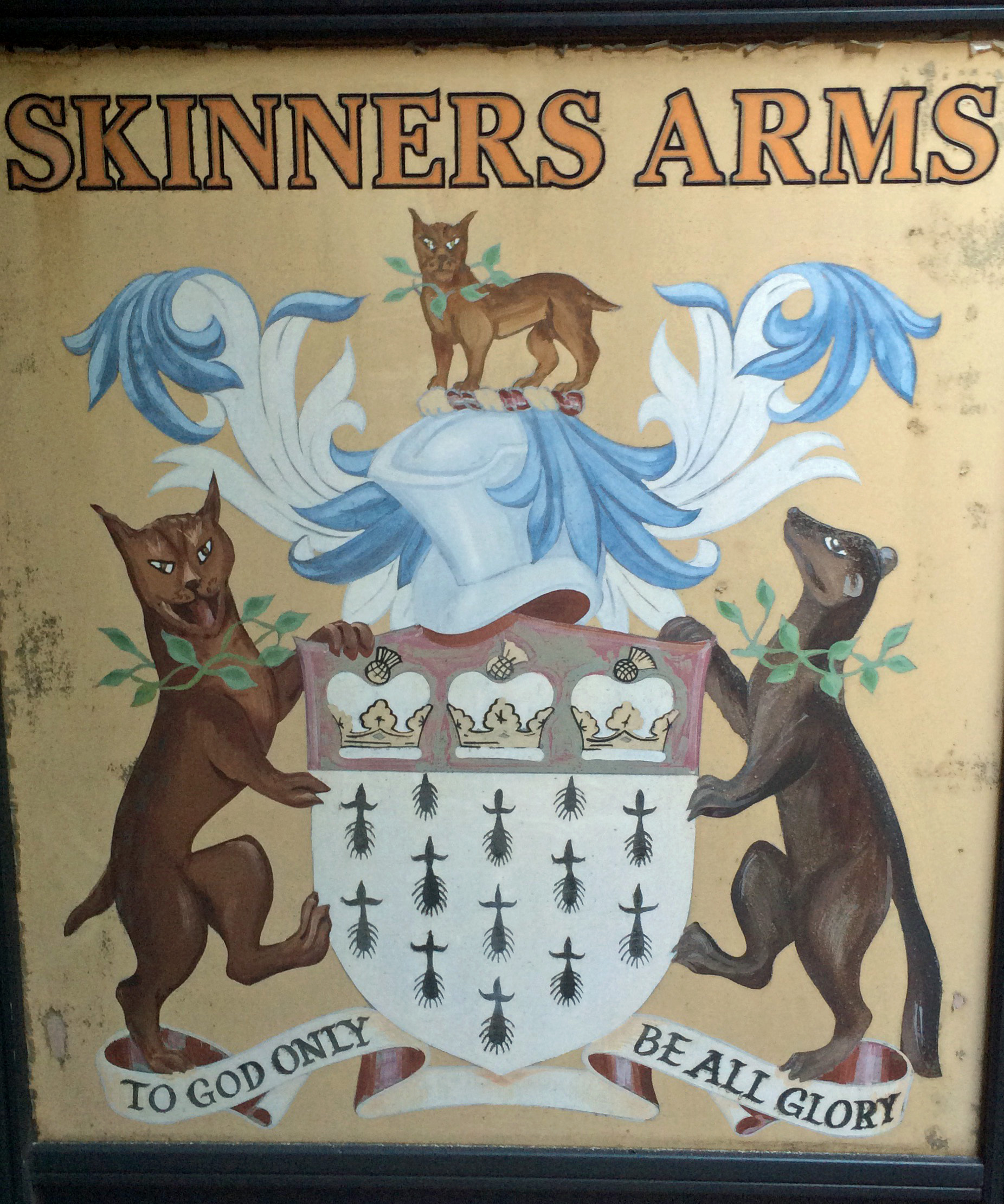Last updated: October 31, 2022.
The material on this page is not yet complete, so please feel free to suggest additions and revisions to the contents of this section - SST is now over 100 years old, and certainly there must be plenty more by way of anecdotes and other detail which we could include here, once we have the material ... so, if you have any such suggestions, and especially if you can supply interesting photos to illustrate the narrative, please use the "Contact Us" option in the menu on the left of this page and we can arrange for you to send them in to the site's webmaster for consideration.
Please note: (i) for legal reasons, we can't accept photos or other material to which you don't have the necessary rights; and (ii) by submitting any photos or other material to us, you represent that you have the necessary rights in such material, and you grant SST and its management the right to reproduce the material on this site.
Thanks in advance!
Abraham Davis, The London Housing Society Limited, and the creation of SST
Starting in the late nineteenth century, Abraham Davis – born in Spitalfields in about 1857 and one of nine sons of Woolf Davis (a self-made furrier, born in Poland, who had started earning his way in life as a cap-maker) - built flats and workshops primarily designed for the Jewish community over much of the East End of London. His brothers are also known for their building work in the East End.
Abraham Davis continued to promote residential building outside the East End into the early twentieth century, frequently acting as his own architect, with significant lasting impact on the continuing London streetscape. From about 1908, he launched various companies and public utility societies (including The London Housing Society Ltd., Lady Workers' Homes Ltd., the Public Utility Housing Society and Service Flats Ltd.) which it has been calculated together promoted the construction of over 2,000 flats in soundly-built blocks in St. Pancras, Maida Vale and St. John's Wood, making use of government finance subsidies available for what today would be termed ‘social housing’.
With a view to insulating himself as far as possible from financial liability for these various development projects, Davis arranged for the construction work to be carried out by a separate company, the Central London Building Company Ltd., which he had also established and to which he usually assigned the main development agreements.
From 1912 until his death aged 67 in 1924, Davis was also a St. Pancras borough councillor, where he served for some years as Chairman of the Public Health Committee, and where he took a leading part in post-1919 public housing construction in the borough.
In the second decade of the twentieth century, The London Housing Society Limited was instrumental in arranging for several housing blocks in our locality, including: Jessel House (on Judd Street), the various Houses which are now collectively known as Queen Alexandra Mansions (on Hastings Street/Judd Street/Tonbridge Street/Bidborough Street) and Rashleigh House (on the west side, and at the southern end of, Thanet Street).
When launched, each block was intended for renting flats to people within a specific range of occupational groups, such as students and young professionals in one block, policemen and nurses in another, and artisans in yet another.
Typically, ‘Mansion’ blocks were designed for middle class occupants, and included provision for staff accommodation as well as bathrooms and entrance halls, whereas mere ‘Houses’ were intended to accommodate working class residents, and individual flats in 'Houses' generally did not have their own bathrooms.
One such block was our own, Sinclair, Sandwich and Thanet Houses (together referred to below as ‘SST’). (Originally, Sinclair House was known as Hastings House.)
Indeed, the inscription “L. H. S. LTD 1912” (an abbreviation of London Housing Society Limited) is still to be seen above the vehicular entrance to Sinclair House on Hastings Street (i.e., at the north end of SST), as shown in this photograph:

The Wellcome Library is situated just 10 minutes' walk from SST at 183 Euston Road, London NW1 2BE; it holds a copy of an annual report (193 pp. long, and accessible online) dated November 22, 1911 produced by John F. J. Sykes, M.D., D.Sc. (the St. Pancras Medical Officer of Health) on the “Vital and Sanitary Condition of the Borough of St Pancras”; we can see from page 176 of that report [1] that the various elements of the three SST Houses were opened in the years 1910 and 1911.
The detail revealed in that report is consistent with the entries for SST that were recorded during the 1911 English national census (which took place on the night of April 2). In the 1911 census, we can see returns for Flats 1 to 19 in Sandwich House: apparently the rest of the Sandwich House development had not been completed by the date of the census; we can also see returns for Flats 1 to 42 in Thanet House, although it's not clear how those numbers relate to today's numbering system. So far, no entries for what is now Sinclair House have been identified.
Livery Company and Kent / Sussex connections
Like much other land in the area, that on which the SST block was constructed was owned by The Worshipful Company of Skinners, one of a number of City of London ‘Livery Companies’.
These Livery Companies have their roots in trade guilds dating back to the Middle Ages - or even earlier; the early guilds controlled the provision of services and manufacture and selling of goods and food in the City of London, preventing unlimited competition and helping to keep wages and working conditions steady in extremely unstable times. As of April 2021 (according to Wikipedia) , there are 110 separate livery companies in London, which "play a significant part in City life, not least by providing charitable-giving and networking opportunities. Liverymen retain voting rights for the senior civic offices, such as the Sheriffs and Lord Mayor of the City of London Corporation, an ancient municipal authority with extensive local government powers." The City of Londons published an informative web page about Livery Companies.)
The Skinners’ Company ranks seventh in order of precedence - its Charter was granted in 1327 - and would originally have been a trade association, responsible for regulating the trade in skins and furs. However, over the years it became a charitable body, concerned among other things with educational establishments, including several in Kent. (The Skinners’ Company maintains a very informative web site.[2])
Specific connections to places in Kent and East Sussex (for example: Sandwich, Thanet, Tonbridge, Bidborough and Hastings) are reflected in local street names, and of course in the very name of our block.
A relief moulding of part of The Skinners’ Company’s coat of arms can be seen from Sandwich Street - at second floor level - on the wall of Sandwich House, at its southern end, next to the building which houses the Lutheran Church, as shown in this photograph:

Similar mouldings are to be found on other buildings in the area (you may be able to spot more in the area).
The “Skinners Arms” public house, on the south-east corner of the junction of Hastings Street and Judd Street, displays the full coat of arms on its pub sign overhanging Judd Street, in glorious colour - as shown here:

Emergence of Sinclair Sandwich Thanet Limited
Over many years, the London Housing Society’s blocks continued to be used for rental housing. However, from the late 1960s and 1970s, as flats became vacant they were progressively sold on long-term leases, a trend which continued under successive freeholders.
In November 1975, The London Housing Society (which during World War II had converted into London Housing and Commercial Properties Limited) bought the freehold interest in the SST block from The Skinners’ Company.
In 1982, London Housing and Commercial Properties Limited sold the freehold interests in SST and other London Housing Society blocks in the area to AVG Investments Limited, which decided in 1985 to offer each of them separately for sale at auction.
That turn of events prompted a number of SST residents to suggest forming a group to buy the SST freehold for themselves, so that the block would effectively be self-owned, and managed by its residents. Many residents joined this scheme, forming a limited company - Sinclair Sandwich Thanet Limited (‘SSTL’) - for the purpose. In 1986, after many twists, turns and setbacks, SSTL succeeded in acquiring the ownership of the freehold to the SST block. Each participating resident was allocated a share in SSTL and granted a 999 year lease on his/her flat; since then, over the years, owners of other flats in the SST block have joined the scheme, receiving the same benefits, albeit at an increasing premium.
Management of the SST block
Whereas London Housing had managed the SST block directly, via its directors and other employees, AVG Investments Ltd. used an external estate management firm, Edward Bailey & Sons; Chartered Surveyor Keith Perry was one of their managers.
When SSTL acquired the SST block’s freehold in 1986, it chose to continue to retain the services of Edward Bailey & Sons as Managing Agent, and Keith Perry continued as their manager with responsibility for the SST block.
Eventually, after a brief period in which Edward Bailey & Sons were taken over by the Prudential, Keith Perry set up his own practice (known as Keith Perry Chartered Surveyor), through which - until the summer of 2019 - he continued as SST's Managing Agent.
Following Keith Perry's withdrawal from active property management in the summer of 2019, Mainstay Residential Limited ("MRL") took over the role of Managing Agent.
MRL was acquired by the FirstPort group in 2020, but continued to act as Managing Agent for the SST block under the MRL name.
In late September 2022, the registered company name of the entity previously known as MRL (Mainstay Residential Limited) was formally changed to FirstProperty Services No. 7 Limted.
Resident Caretakers at SST
Older residents will have fond memories of Fred Preece, who was employed for many years by London Housing as the block’s residential Caretaker, and who was assisted by various cleaners and sub-caretakers.
Fred Preece retired in the late 1970s, and was followed by a succession of Caretakers.
In 1991, after acting for a number of months as temporary Caretaker, Ebo Turkson - who had also been employed as a cleaner within SST - became SST's new residential Caretaker. Ebo had been able to demonstrate some useful skills (acquired from his work as a security officer with a specialist firm), including the vital ability to deal e.g. with problem contractors. Ebo continues in the same position to this day.
Recent renovations and works
- SST block courtyard
- During the 1990s:
- - the unattractive and deteriorating concrete surface of the block’s courtyard was replaced with paving;
- - trees and shrubs were planted; and
- - the bike shed and dustbin pergolas were installed.
- SST lifts
- The SST block was originally built with two lifts, the inclusion of which at the time was still a noteworthy innovation for such a block; records show that Abraham Davis introduced a lift into Hastings House (now known as Sinclair House) as far back as 1908[3].
The south lift at SST suffered a fire (possibly due to incendiary bombing during World War II), following which its shaft was closed off, and for many years only the north lift operated. -
In the late 1970s, it became impractical to maintain that lift to the standards imposed by the safety requirements at the time; London Housing reinstated the south lift, closing off the north one, thus leaving the block still with only one operating lift.
Finally, over the late 1990s and early 2000s, we installed a new north lift, and extensively refurbished the south one, thereby providing the block once more with two operating lifts compliant with modern standards.
- Steelwork deterioration
-
In common with other buildings of similar construction dating from the early twentieth century, deteriorating steelwork has proved to be a problem for SST.
Preliminary investigations in our block indicated that this deterioration was confined to common parts exposed to the weather.
Over the past few years, a phased programme of steelwork repair and renewal was carried out at SST; these works were completed early in 2015. The work included the application of a weatherproof surface to common parts, with a view to resisting future corrosion.
[1]http://wellcomelibrary.org/moh/report/b18251948/181?asi=0&ai=181 ![]()
[2]http://www.theskinnerscompany.org.uk/ ![]()
[3]See document GLC/AR/BR/22/BA/032430 in the London Metropolitan Archives (this document is the Building Act "case file" for 'Hastings House' in our block - now known as Sinclair House).
